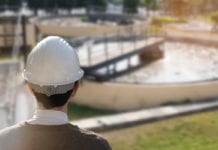The new year will see the start of a pumping revolution forecasts Steve Paddock.

THE European Union has recognised that in order to achieve anywhere near its requirements for carbon emission reductions and to see significant reductions in the energy needed to power heating and hot water systems across the 27 member states, it has to lay down the law. The UK Government has set out very ambitious targets for energy and carbon reduction and it is looking for significant help from the heating and hot water and air conditioning sectors to achieve these.
Having addressed the issues relating to the energy efficiency of boilers and begun the process of encouraging the introduction of renewables on a wider scale – albeit perhaps a little half-heartedly due to the economic constraints the UK has had to adjust to of late – it has had to turn its attention to other components of the heating system to find other sources of savings that will make a healthy contribution to the totals required to make a dent in the targets with which it’s faced.
Clearly, one of the key components of a heating or cooling system that currently uses too much energy – although quite small in size and overlooked by many as a key user of electricity – is the pump.
The total electricity consumption of all glandless circulating pumps operated in the European Union for heating and air conditioning – the normal small circulating pumps – has to be halved by 2020. This is the objective of an EU ordinance under the European ErP (Eco-Design) Directive which will regulate the energy efficiency of this type of pump, from January 1 2013 onwards, with a further tightening of requirements planned for August 1 2015.
Over-all, these changes are thought to be likely to provide an energy saving of 23 terawatt hours for the EU as a whole. This corresponds to the electricity generated by about six medium-sized coal-fired power stations or a reduction in EU-wide carbon dioxide (CO2) emissions of about 11 million tonnes per year.
In order to achieve this goal set by the European Commission, the EU ordinance prohibits the sale of technically outmoded, inefficient pump models from 2013 onwards. This will mean a ban on sales of about 90% of the glandless circulating pumps that were on the market in 2009. The reality is that the new efficiency requirements will be practically impossible to achieve without using high-efficiency pumps with EC motor technology.
The important new yardstick for determining which pump models can continue to be used in future is referred to as the energy efficiency index (EEI). This is calculated using a process defined in the ordinance (EC) 641/2009. The average electrical power of a pump is calculated on the basis of a load profile in relation to a reference pump, that is, an average pump with the same hydraulic output.
From January 2013, the limit EEI value of glandless circulating pumps installed outside the heat generator – external pumps – not those incorporated in combi or system boilers at this stage will be defined as 0.27. The energy efficiency classes specified at present will then become superfluous, because as a rule, pumps will be better than the minimum requirements of the current A-rated pumps.
From August 2015, the EEI limit value will be reduced to 0.23. This will also apply to glandless circulation pumps, designed to operate in newly-installed heat generators or solar thermal systems (integrated pumps). In the last implementation stage, the regulations starting from 2020 will also apply to the replacement of integrated pumps in existing heat generators. The regulations apply to all glandless circulating pumps in heating and air conditioning applications with the exception of drinking water circulation pumps.
Looking at the current pump population, there are still many heating and air conditioning systems which are equipped with pumps that have no speed control. Because of this, an unnecessarily high amount of electricity is consumed – up to 10 times more than the newest pump generation requires.
Models with extremely low electricity consumption are already available. These not only benefit the environment but also clearly, offer significant benefits to the home or building owner and the consumer because of lower electricity bills, whilst making no concessions in terms of comfort and performance. So it’s no surprise that pump manufacturers such as Wilo, with the technology to offer high efficiency pumps, are recommending that specifiers and installers exclusively use high-efficiency pumps in their planning and their offers.
Steve Paddock is managing director of Wilo Pumps.







